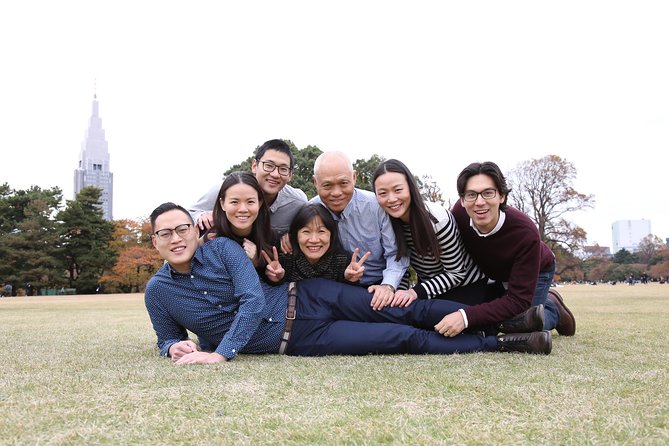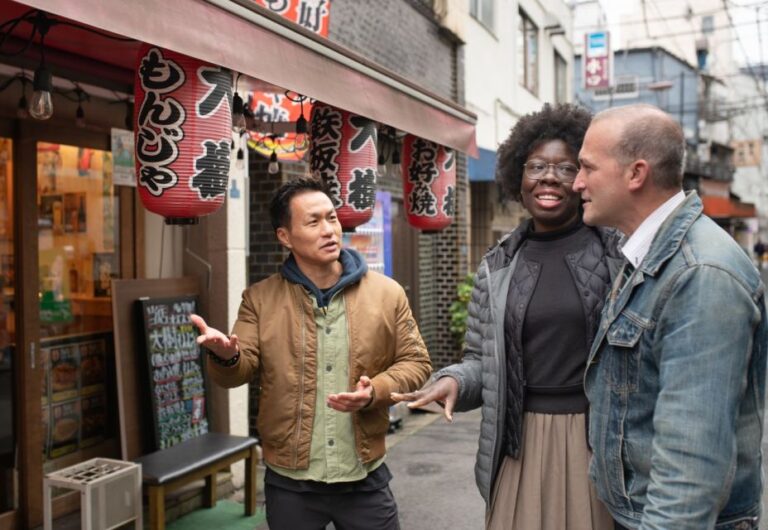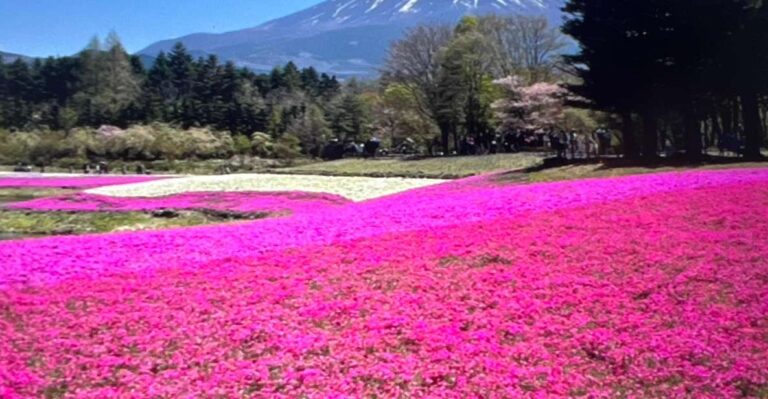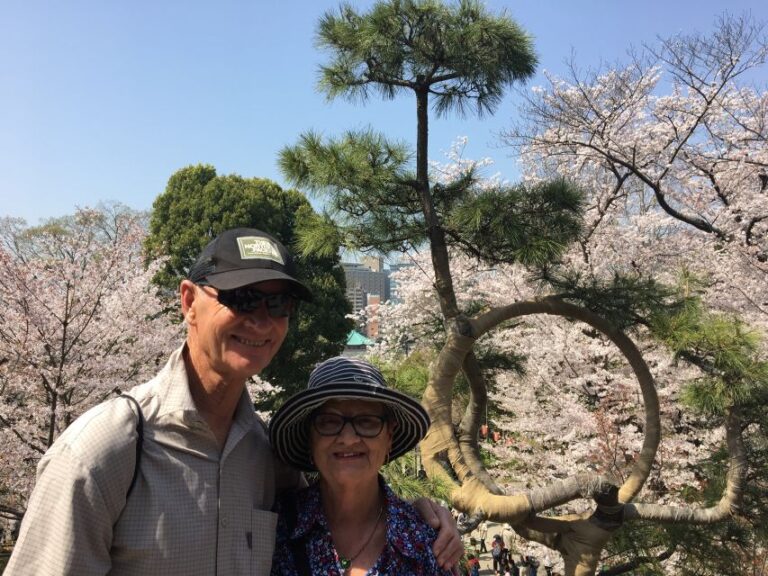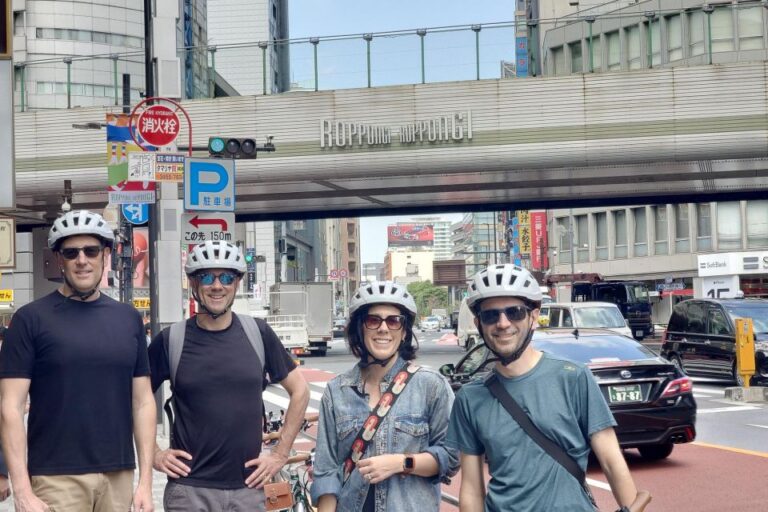Ryogoku Sumo Town History / Culture and Chanko-Nabe Lunch
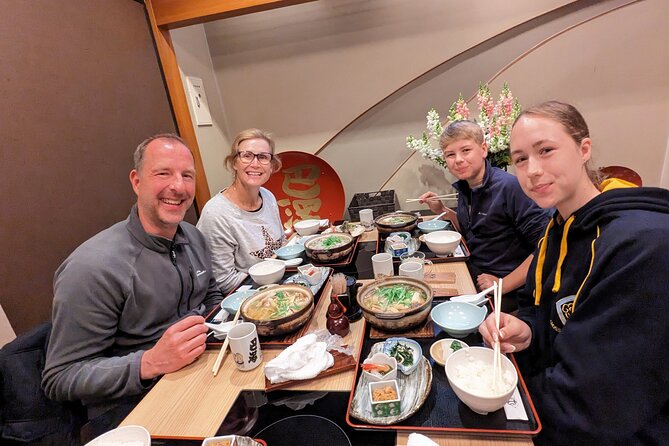
Curious about the intersection of sumo wrestling history, culture, and cuisine? How did Ryogoku Sumo Town become the epicenter of this revered sport, shaping not just athletic prowess but also culinary traditions?
Uncover the fascinating stories behind the evolution of sumo wrestling, the significance of Chanko-Nabe in sumo culture, and the culinary delights awaiting visitors in this iconic Tokyo neighborhood.
Explore the depths of Ryogoku’s sumo legacy and savor the flavors of Chanko-Nabe that have nourished sumo wrestlers for generations.
More nearby cooking classses we've reviewed
Key Points
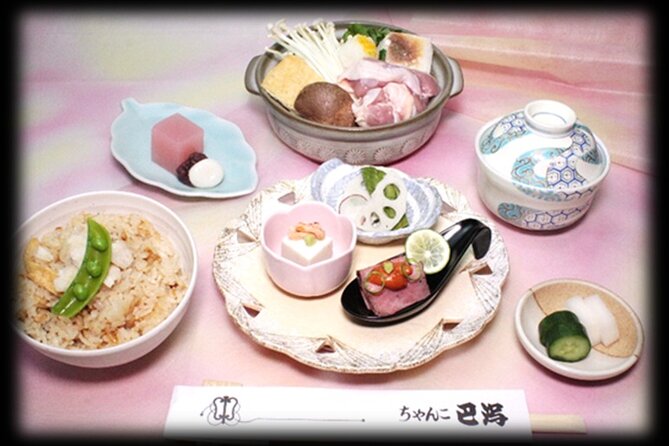
- Ryogoku Sumo Town is a cultural hub preserving centuries-old sumo traditions through architecture and museums.
- Sumo wrestling culture has evolved with technology, globalization, and modern training methods while maintaining ancient customs.
- Noteworthy landmarks like Edo-Tokyo Museum and Ryogoku Kokugikan showcase the historical significance of sumo in Ryogoku.
- Local cuisine in Ryogoku is heavily influenced by sumo wrestlers’ traditional high-protein diet, with Chanko-Nabe symbolizing unity and teamwork.
It's also worth checking out some other tours and experiences nearby.
Historical Background of Ryogoku Sumo Town

Ryogoku Sumo Town, nestled in the heart of Tokyo, boasts a rich historical background that dates back centuries. This area is steeped in Sumo traditions and local history, making it a significant cultural hub for this traditional Japanese sport. Sumo wrestling has been an integral part of Japanese culture for generations, with Ryogoku serving as a focal point for the sport’s development and promotion.
Over the years, Ryogoku has witnessed the evolution of Sumo traditions, shaping the way the sport is practiced and celebrated today. The town’s historical significance is evident in its architecture, museums, and annual Sumo tournaments, all of which contribute to preserving and honoring the local history of Sumo wrestling.
Evolution of Sumo Wrestling Culture
In the realm of Sumo wrestling culture, the evolution of traditions and practices has been instrumental in shaping the sport’s contemporary landscape. Sumo traditions have deep roots in Japanese history and have been carefully preserved over centuries. However, modern influences have also played a significant role in shaping the way sumo is practiced and perceived today.
Some key points to consider include:
- Incorporation of technology in training methods
- Globalization of the sport through international tournaments
- Changes in diet and fitness regimes for sumo wrestlers
- Impact of social media on promoting sumo events
These factors collectively contribute to the dynamic evolution of Sumo wrestling culture, blending ancient customs with contemporary practices.
Noteworthy Cultural Landmarks in Ryogoku
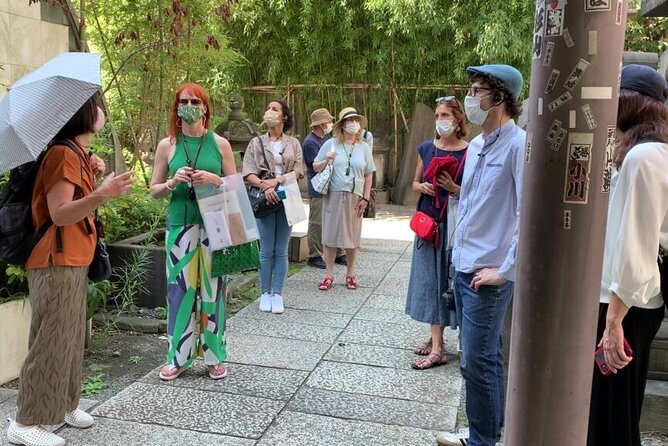
One of the most iconic cultural landmarks in Ryogoku is the Edo-Tokyo Museum, showcasing the history and heritage of Tokyo from the Edo period to modern times.
| Cultural Landmarks | Location | Highlight |
|---|---|---|
| Edo-Tokyo Museum | 1-chōme-4-1 Yokoami | History and heritage of Tokyo from Edo period to present |
| Ryogoku Kokugikan | 1-chōme-3-28 Yokoami | Sumo wrestling tournaments and events |
| Sumida Hokusai Museum | 2-chōme-7-2 Kamezawa | Artworks by Katsushika Hokusai, famous ukiyo-e painter |
| Kyu-Yasuda Teien | 3-chōme-29-11 Ryōgoku | Traditional Japanese garden with tea house |
| Yokoamicho Park | 2-chōme-2 Yokoami | Park with cherry blossoms and tribute to Aioi Bridge |
Influence of Sumo on Local Cuisine
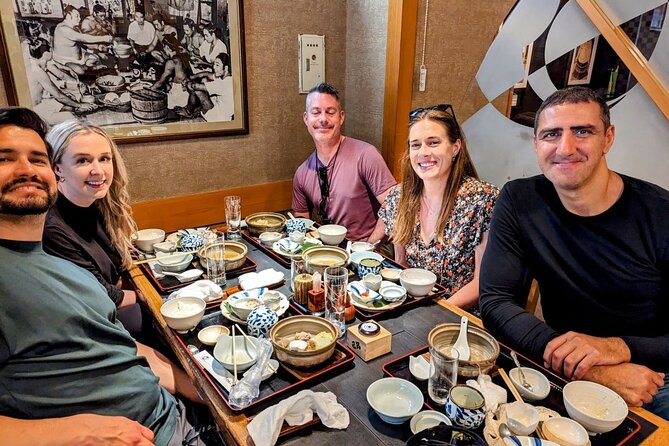
Local cuisine in Ryogoku has been significantly influenced by the traditional diet of sumo wrestlers, known for its hearty and nutritious dishes. Sumo cuisine has left a lasting impact on the local flavors, shaping the dining scene in Ryogoku. This influence can be seen in the emphasis on high-protein ingredients and large portion sizes to fuel the wrestlers’ rigorous training and matches.
- Hearty and Nutritious Dishes
- Emphasis on High-Protein Ingredients
- Large Portion Sizes
- Traditional Cooking Techniques
These elements combine to create a unique culinary experience that reflects the rich history and traditions of sumo wrestling in Ryogoku.
Tradition and Significance of Chanko-Nabe
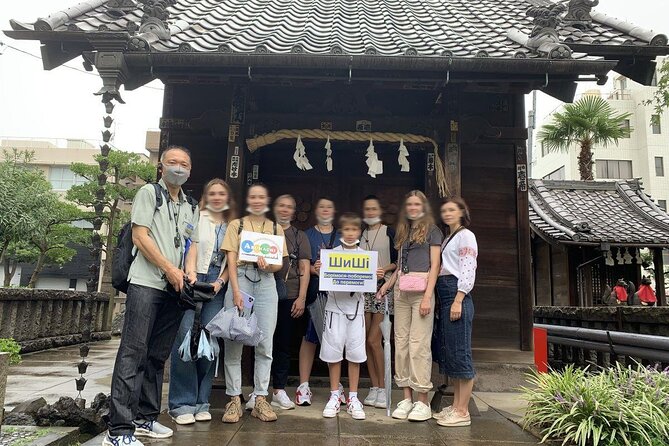
The tradition and significance of Chanko-Nabe in Ryogoku reflect the deep-rooted connection between sumo wrestling and Japanese culinary heritage. Chanko nabe, a hearty hot pot dish, originated as a staple in the sumo diet traditions. Wrestlers traditionally consumed this protein-rich meal to gain weight and muscle mass, as sumo wrestling requires competitors to have a robust physique.
The dish typically consists of various ingredients like chicken, fish, tofu, and vegetables cooked in a savory broth. Beyond its practical purpose of supporting the wrestlers’ dietary needs, Chanko-Nabe also symbolizes unity and teamwork, as it’s traditionally shared among sumo stable members. This communal aspect reinforces the bonds between wrestlers and cultivates a sense of camaraderie within the sumo community.
Chanko-Nabe: A Sumo Wrestler’s Staple Diet
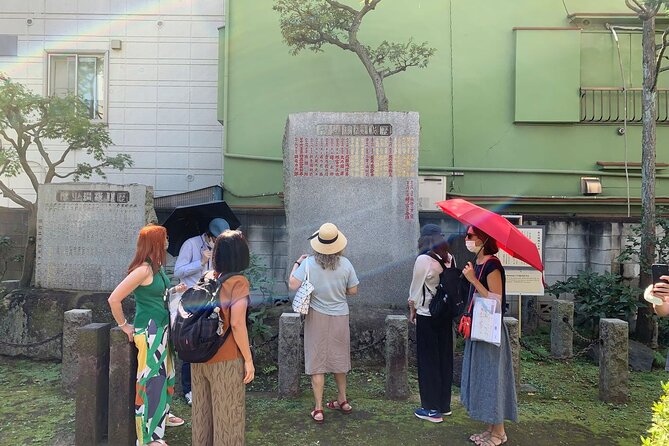
Chanko-Nabe, a hearty and protein-rich hot pot dish, is a fundamental component of a sumo wrestler’s daily diet, essential for maintaining the robust physique required for the sport. Sumo wrestlers rely on this nutritious meal not only for its caloric density but also for its ability to provide essential nutrients that support their intense training routines.
-
Nutrition: Packed with a variety of ingredients like meat, seafood, vegetables, and tofu, Chanko-Nabe offers a well-rounded meal that fuels the demanding physical regimen of sumo wrestlers.
-
Cooking Techniques: The communal aspect of preparing and sharing Chanko-Nabe fosters camaraderie among sumo wrestlers, enhancing team spirit and unity.
-
Sumo Training Essentials: Consumed in large quantities, this dish aids in weight gain, a necessary component for sumo athletes to increase their size and strength.
-
Cultural Significance: Beyond its nutritional value, Chanko-Nabe symbolizes tradition, discipline, and the unique lifestyle of sumo wrestlers.
Chanko-Nabe Cooking Demonstration Experience
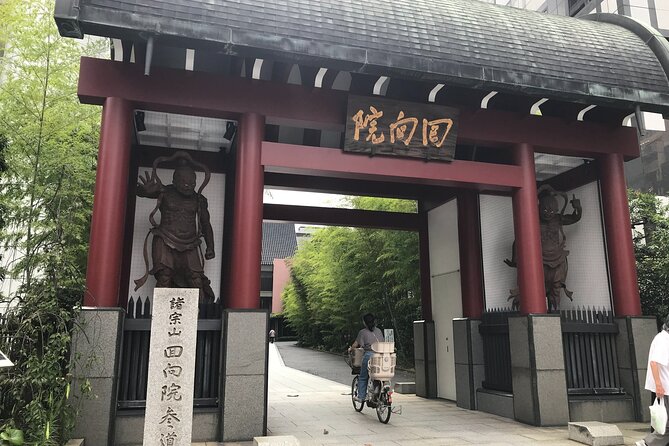
During the interactive session, you will learn the traditional techniques of preparing a hearty Chanko-Nabe meal. The experience will explore the intricate art of Chanko nabe preparation, showcasing how sumo wrestlers fuel their bodies with this nutritious dish. Sumo techniques will be shared, emphasizing the importance of balance and strength in both cooking and wrestling. To provide a glimpse into this culinary world, a table below illustrates the key steps involved in crafting a delicious Chanko-Nabe meal:
| Steps | Ingredients | Tools |
|---|---|---|
| Prepare broth | Chicken broth, soy sauce, sake | Pot |
| Chop vegetables | Napa cabbage, mushrooms, leeks | Knife |
| Add protein | Chicken, tofu, seafood | Ladle |
| Simmer ingredients | Slow cook for flavors to meld | Stove |
| Serve hot | Enjoy with rice or noodles | Bowls, chopsticks |
Exploring Ryogoku’s Culinary Heritage
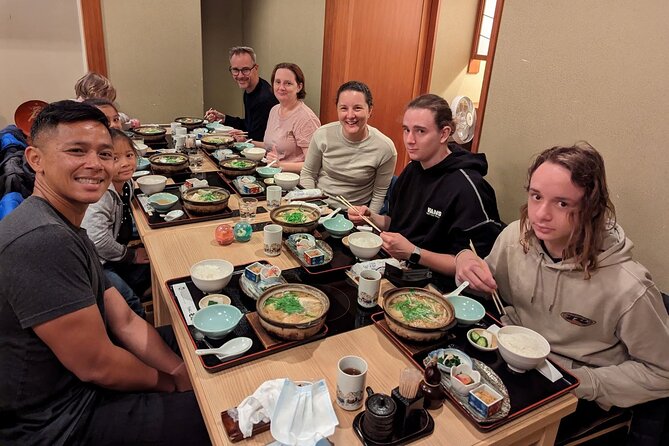
Participants in the Chanko-Nabe Cooking Demonstration Experience can further explore Ryogoku’s culinary heritage through an immersive journey into traditional sumo-inspired dishes. Ryogoku, known for its deep connection to sumo wrestling, offers a unique opportunity to explore the culinary world of sumo wrestlers, known for their robust and nutritious diet. Here are some highlights:
-
Chanko Nabe Recipes: Learn the secrets behind preparing this hearty hotpot dish favored by sumo wrestlers.
-
Sumo Wrestlers’ Diet: Discover the essential components of a sumo wrestler’s diet, emphasizing strength and energy.
-
Traditional Cooking Techniques: Explore the traditional methods used in preparing sumo-inspired dishes.
-
Cultural Significance: Understand the cultural importance of food in sumo wrestling and its role in the wrestlers’ training regimen.
Frequently Asked Questions
Can I Participate in a Sumo Wrestling Match During This Tour?
Participants cannot engage in a sumo wrestling match during the tour. The experience focuses on sumo viewing and culture, not wrestling training or techniques. Guests enjoy a sumo experience, chanko-nabe lunch, and alcoholic beverages.
Are There Any Opportunities to Meet Sumo Wrestlers in Person?
Yes, there are opportunities to meet sumo wrestlers in person. Visitors may have the chance to witness sumo training sessions up close and even participate in autograph signing events, providing a unique glimpse into the world of sumo wrestling.
What Is the Significance of the Chanko-Nabe Pot Used in Cooking?
The significance of the chanko-nabe pot in cooking lies in its role as a cultural tradition and essential cooking utensil. This communal hot pot embodies sumo wrestlers’ healthy eating habits and symbolizes unity through shared meals.
Are There Any Special Rituals or Traditions Associated With Eating Chanko-Nabe?
When it comes to eating chanko-nabe, there are cultural traditions and eating etiquette to follow. These include communal cooking, respecting the ingredients, and showing appreciation for the chef’s hard work. It’s a unique dining experience.
Can I Purchase Traditional Sumo Wrestling Memorabilia or Souvenirs in Ryogoku Sumo Town?
Visitors can purchase traditional sumo wrestling memorabilia and souvenirs in Ryogoku Sumo Town. The area offers a variety of items related to sumo culture, making it a great place to find unique keepsakes and gifts.
Recap
To sum it up, a visit to Ryogoku Sumo Town offers a fascinating glimpse into the history and culture of sumo wrestling, along with a delicious Chanko-nabe lunch experience.
Explore the iconic neighborhood, learn about sumo traditions, and savor the flavors of this unique cuisine.
Whether you’re a sumo enthusiast or just curious about Japanese culture, this tour promises a memorable and educational journey through the world of sumo wrestling and the delectable Chanko-nabe cuisine.

